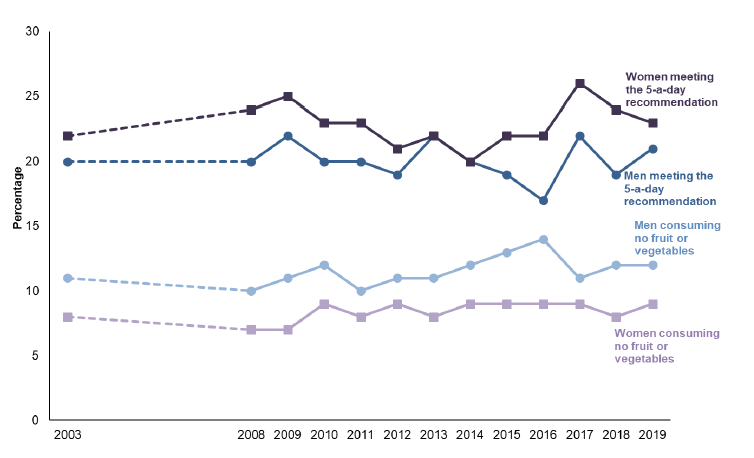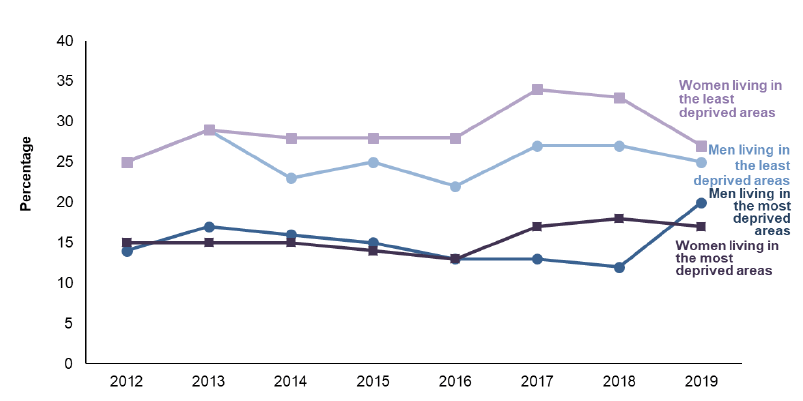Diet and healthy weight: monitoring report 2020
Latest results against the obesity indicator framework originally developed to monitor progress against our Prevention of Obesity Route Map (February 2010), now superseded by the Diet and Healthy Weight Delivery Plan and Active Scotland Delivery Plan (summer 2018).
This document is part of a collection
Adult fruit and vegetable consumption
Scottish Health Survey
Latest results
- In 2019, 22% of adults aged 16 and over met the five-a-day recommendation for consumption of fruit and vegetables, same as in 2018. This figure has remained fairly constant since 2003, with only a small amount of variation over the years (between 20% and 24%).
- In most years since 2003, women have been more likely than men to consume the recommended five a day portions of fruit and vegetables, yet in 2019 there was no significant difference between the sexes (23% of women compared with 21% of men met the five-a-day recommendation).
- In 2019, 10% of adults consumed no fruit and vegetables on a typical day, a figure which has not changed much since 2003.
- In 2019, adults consumed an average of 3.3 portions of fruit and vegetables a day, a figure which has varied very little since 2003. Mean fruit and vegetable consumption was not significantly different for women and men (3.3 and 3.2 portions a day respectively).
- In 2019, women aged 16 to 24 tended to eat less fruit and vegetables than older women (an average of 2.8 portions compared with means of between 3.2 and 3.5 for the other age groups). For men, lowest levels of consumption were observed in the 55-64 age group (an average of 3.0 portions a day) and highest for those aged 45-54 and 75 and over (an average of 3.3 portions a day).

- Fruit and vegetable consumption (5-a-day) has been higher in Scotland's least deprived areas compared to the most deprived in recent years. In 2019, the gap was higher for women (27% in the least deprived compared with 17% in the most deprived areas) than for men (25% and 20% respectively).

Definitions
A portion is defined as the conventional 80g of a fruit or a vegetable.
Geography available
Scotland level, health board, local authority (where sample sizes are sufficient).
Equalities data
Breakdowns by age, sex, deprivation (SIMD), equivalised income and disability (limiting long-term illness) are available in the SHeS 2019 supplementary tables.
Rationale for including adult fruit and vegetable consumption
These data are useful to monitor changes in the proportion of Scotland's adult population who meet the 5-a-day recommendation for consumption of fruit and vegetables. Different patterns amongst men and women of different ages can be identified.
Factors influencing adult fruit and vegetable consumption
Availability, cost, and access to fruit and vegetables.
Contact
There is a problem
Thanks for your feedback